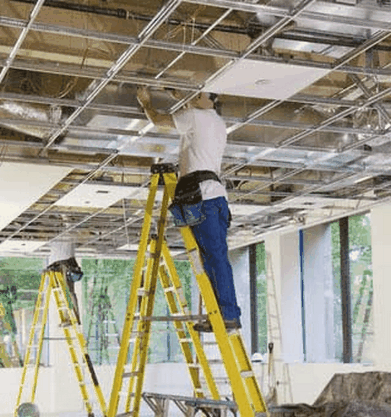

BUILDING ELECTRICAL INSTALLATION PORTABLE
High amperage equipment such as space heaters, portable air conditioners and other equipment must be plugged directly into permanent wall receptacles.Surge suppressors with built-in circuit breakers may be used long-term and are available with three, six and 15 foot-long cords.Extension cords may not be used as permanent wiring and should be removed after temporary use for an activity or event.Make sure electrical equipment is properly connected, grounded and in good working order.Don't work with exposed conductors carrying 50 volts or more.Poor wiring connections and old wiring that is damaged and cannot support the loadĪn explosion can occur when electricity ignites a flammable gas or combustible dust mixture in the air. Ignition from a short circuit or static charge is possible.Faulty electrical outlets resulting in poor contact or arcing.Too much current running through wiring where overcurrent protection fails or does not exist.Fire/ExplosionĮlectrical fires may be caused by excessive resistance that generates heat from any of the following: The severity of injury depends on the amount of current flowing through the body, the current's path through the body, the length of time the body remains in the circuit and the current's frequency.

Electricity can also cause forceful muscle contraction or falls. This can happen if someone touches both wires of an energized circuit, touches one wire of the circuit while standing unprotected or touches a metal part that has become energized.Įlectrocution refers to the injury or lethal dose of electrical energy. When a person receives a shock, electricity flows between parts of the body or through the body to a ground. Electricity travels through closed circuits, and people, sometimes tragically, can become part of the circuit. ShockĮlectrical shock happens when current passes through the body. UW personnel need to be aware of the hazards electricity poses, such as shock, fire and explosion, and either eliminate or control those hazards. Even household current (120 volts) can stop your heart. While such work does not need to be notified to the department it must still meet the safety standards set by the bye-laws and your electrician should provide you with a certificate confirming the work has been undertaken correctly.We rely on electricity, but sometimes underestimate its capability of causing injury. installing cabling at extra low voltage for signalling, cabling or communication purposes (eg telephone cabling, cabling for fire alarm or burglar alarm systems, or heating control systems).adding a fused spur (which is a socket that has a fuse and a switch that is connected to an appliance eg heater) to an existing circuit (but not in a kitchen, bathroom or outdoors).replacement of socket outlets, light fittings, control switches on a like-for-like basis.The building bye-laws allow minor works to be carried out without notice being given to the department. The scheme provider will then notify the department and send you confirmation that this has been done.Īpproved schemes for certifiable building work Work you can carry out without building permission It is advisable to ask your electrician to provide information about which scheme they belong to and their membership number, before you instruct them to carry out work.Īn electrician who is a member of an approved scheme can undertake all types of electrical work without the need to notify the department at commencement, however the electrician must notify the scheme provider at completion of the work to confirm it has been properly inspected and tested. Most electrical contractors employ people who are able to inspect and test electrical work. If you are carrying electrical work in your home or any other building, the work needs to be inspected and tested by a person registered with a competent person scheme approved for the purposes of the building bye-laws. Planning permission is not required for electrical installations within a building unless the building is a listed building or place (LBP) or a potential listed building or place (pLBP) Building permission


 0 kommentar(er)
0 kommentar(er)
